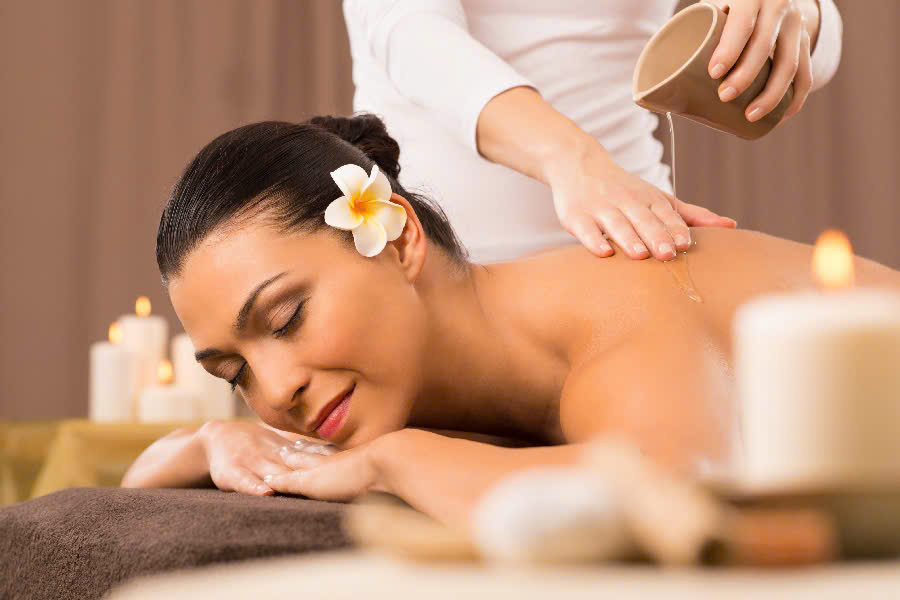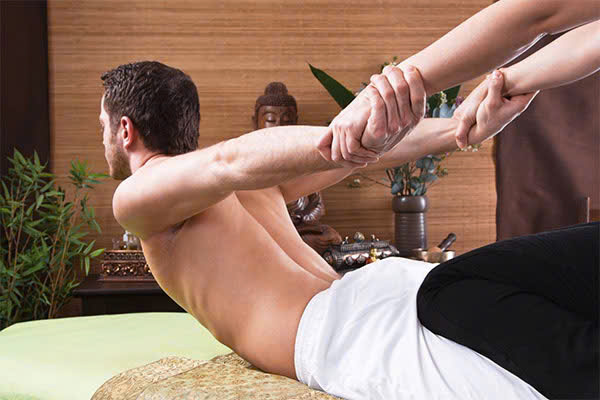Relax Massage and Therapy Massage: What They Are & Which Is Best for You
When it comes to maintaining physical and mental well-being, massages are a popular choice worldwide. Relax massage and therapy massage are two of the most common types, each offering unique benefits tailored to different needs. Understanding what these massages entail, their differences, and which one suits your lifestyle can significantly enhance your health regimen. In this comprehensive guide, we will explore what are relax massage and therapy massage, clarify the difference between relax massage and therapy massage, highlight the top benefits of relax massage and therapy massage, and help you determine which one is right for you.

Relax Massage and Therapy Massage
Massages have been practiced for centuries across different cultures, evolving into various styles designed for specific outcomes, whether relaxation or therapeutic healing. Relax massage and therapy massage are distinct categories that serve different purposes but can sometimes overlap in practice.
In today’s fast-paced world, many seek out massages to alleviate stress, reduce muscle tension, or address specific health concerns. Both relax massage and therapy massage cater to these demands but approach them from different angles—one primarily focusing on unwinding and rejuvenation, the other on targeted healing and rehabilitation.
Understanding these differences and knowing how each can benefit you is essential in choosing the appropriate massage type that aligns with your health goals.
What are Relax Massage and Therapy Massage
What are relax massage and therapy massage? This question is fundamental in discerning which massage style fits your needs best. While they may seem similar at first glance, their techniques, objectives, and outcomes differ significantly.
The Concept of Relax Massage
A relax massage is designed primarily to promote calmness, reduce stress, and provide a sense of tranquility. It often employs gentle, soothing strokes, long gliding movements, and light pressure that targets surface muscles and soft tissues.
The primary goal is to help clients unwind mentally and physically, easing anxiety and promoting better sleep. Techniques such as Swedish massage fall under this category, emphasizing comfort and sensory pleasure rather than deep tissue work.
The Essence of Therapy Massage
On the other hand, therapy massage focuses on addressing specific musculoskeletal issues, injuries, or chronic pain conditions. It involves more targeted, precise techniques such as deep tissue massage, trigger point therapy, or myofascial release.
This type of massage aims to improve mobility, correct postural imbalances, and facilitate the body’s natural healing processes. It often requires a thorough assessment by trained therapists who adapt their methods according to the individual’s health condition.

Commonalities and Overlap
While the distinctions are clear, it’s important to note that some therapies incorporate elements of both relaxation and therapy. For example, a therapist might use gentle strokes initially to relax, then proceed to deeper work if necessary. This blend ensures clients enjoy immediate relaxation alongside long-term therapeutic benefits.
Practical Considerations
Knowing what are relax massage and therapy massage helps individuals select the appropriate session based on their objectives—whether it’s stress relief after a hectic week or addressing an ongoing muscular injury.
By understanding their core principles, clients can communicate their needs effectively to practitioners, ensuring optimal results from their sessions.
What is the difference between relax massage and therapy massage
Distinguishing what is the difference between relax massage and therapy massage can be nuanced, yet crucial for setting realistic expectations and achieving desired health outcomes.
Technique and Pressure
One of the most apparent differences lies in the techniques used. Relax massage employs lighter, flowing strokes aimed at soothing nerves and soft tissues without causing discomfort. It emphasizes rhythm, warmth, and tactile comfort.
In contrast, therapy massage often involves deeper pressure, targeting specific muscles and connective tissues. Techniques like deep tissue massage require significant force to reach painful or tense areas, sometimes causing discomfort but intended to break down adhesions and trigger points.
Goals and Outcomes
The primary goal of relax massage is to induce a state of deep relaxation, decrease cortisol levels, and improve mental well-being. Clients typically leave feeling refreshed, lighter, and less anxious.
Therapy massage, however, aims for physical improvements—reducing chronic pain, increasing range of motion, and correcting biomechanical issues. These sessions may be more focused and longer-lasting due to their targeted nature.

Duration and Frequency
Because of their intensity, therapy massage sessions might be longer or more frequent, especially when treating specific injuries. Regular relaxation massages may be scheduled weekly or bi-weekly to maintain stress relief and overall wellness.
Suitability and Precautions
While relax massage is suitable for almost everyone, especially those new to massage therapy or seeking stress reduction, therapy massage requires a skilled practitioner familiar with medical conditions and anatomy. People with certain health issues, like osteoporosis or skin infections, should consult healthcare providers before opting for deep tissue procedures.
Cost Implications
Typically, therapy massage is priced higher due to the increased skill level required and the time spent on targeted treatment. Conversely, relax massage is often more affordable and accessible to larger populations seeking general relaxation.
Summary of Key Differences
- Technique: Light strokes vs. Deep pressure
- Focus: Stress relief vs. Pain relief and rehabilitation
- Experience: Gentle and soothing vs. Firm and targeted
- Duration: Often shorter for relaxation; potentially longer for therapy
- Cost: Generally lower for relaxation; higher for therapy
Having clarity on what is the difference between relax massage and therapy massage empowers clients to choose sessions aligned with their health needs and personal preferences.
Top Benefits of Relax Massage and Therapy Massage
Both relax massage and therapy massage offer myriad benefits, though they serve different purposes. Recognizing these advantages can help individuals appreciate the significance of incorporating regular massage sessions into their wellness routines.
Benefits of Relax Massage
- Stress Reduction and Mental Clarity
A primary benefit of relax massage is its ability to reduce stress hormones like cortisol, thereby improving mood and mental clarity. The sedative effect of gentle strokes creates a calming experience conducive to mental relaxation.
- Muscle Tension Relief
Even superficial massage techniques can loosen tight muscles, reducing stiffness and soreness. This benefit extends to improving flexibility and decreasing the likelihood of injury caused by muscle overuse.
- Enhanced Circulation
Gentle, rhythmic movements stimulate blood flow, helping deliver oxygen and nutrients to tissues while aiding in waste removal. Improved circulation can lead to healthier skin and faster recovery from minor injuries.
- Better Sleep Quality
Many clients report improved sleep patterns following relaxing massage sessions, owing to decreased anxiety and muscular tension that otherwise interfere with rest.
Benefits of Therapy Massage
- Pain Management and Injury Recovery
Therapy massage directly targets problematic areas—such as knots, trigger points, or scar tissue—facilitating pain relief and accelerating healing processes.
- Improved Range of Motion
By loosening adhesions and releasing fascia restrictions, therapy massages help restore joint mobility and mitigate stiffness caused by injuries or repetitive strain.
- Postural Correction
Chronic poor posture can lead to muscular imbalances. Therapeutic massage can address these issues by realigning muscles and tissues, preventing long-term musculoskeletal problems.
- Prevention of Future Injuries
Regular therapy sessions strengthen muscles and improve biomechanics, reducing the risk of re-injury or developing chronic conditions.
Additional Advantages
- Enhanced immune function through the reduction of stress-induced immunosuppression.
- Better mental health, including alleviating symptoms of anxiety and depression.
- Support complementing other medical treatments, such as physiotherapy or chiropractic care.

Relax Massage and Therapy Massage
How Both Complement Each Other
Interestingly, combining relax massage and therapy massage can provide holistic health benefits—immediate relaxation paired with targeted healing. For example, a session might start with gentle strokes to ease anxieties before progressing into deeper work for muscle rehabilitation.
Data List of Benefits
To summarize, here are some pivotal benefits:
- Stress and anxiety reduction
- Pain relief
- Increased flexibility and mobility
- Improved circulation
- Better sleep quality
- Enhanced immune health
- Prevention of musculoskeletal issues
Understanding these benefits underscores why integrating both types of massage could be advantageous depending on individual health goals.
Relax Massage and Therapy Massage Which One Is Right for You
Choosing between relax massage and therapy massage depends heavily on your personal health objectives, current physical condition, and lifestyle.
Assessing Your Needs
Begin by evaluating what you aim to achieve with massage therapy. Are you seeking relief from daily stress, anxiety, or to unwind after a busy week? Or do you have persistent pain, muscle injuries, or postural issues requiring targeted intervention?
- If your main goal is general relaxation, stress reduction, or mental well-being, then relax massage would be appropriate.
- Conversely, if you’re experiencing chronic pain, recovering from injury, or need to improve mobility, therapy massage might be better suited.
Consulting Healthcare Professionals
It’s always advisable to consult with healthcare providers or licensed massage therapists. They can assess your condition and recommend the most effective treatment plan.
Considering Personal Preferences and Tolerance
Some individuals might prefer gentle, soothing touch regardless of their condition, favoring relax massage. Others may feel comfortable with or even prefer the deeper pressure involved in therapy massage.
Lifestyle Factors
- Busy professionals with high-stress jobs may prioritize relax massage to decompress.
- Athletes or individuals undergoing physical therapy may benefit from therapy massage for recovery and performance optimization.
Combining Both Approaches
Many clients find a combination of both massage types beneficial. Scheduling sessions that balance relaxation and targeted therapy ensures holistic wellness, addressing physical ailments and mental health simultaneously.
Practical Tips for Decision-Making
- Be honest about your pain levels and stress.
- Communicate your goals openly with your massage therapist.
- Experiment with different sessions to gauge comfort and benefits.
- Consider insurance coverage or budget constraints.
Final Reflection
Ultimately, which one is right for you hinges on your individual health profile and personal goals. The key is to align your expectations with the expertise of your therapist and your body’s needs.
Conclusion
Understanding what are relax massage and therapy massage and the difference between relax massage and therapy massage enables you to make informed decisions about your health and wellness routines. While relax massage offers profound mental and superficial physical benefits, therapy massage targets specific structures for healing and functional improvement. Recognizing the top benefits of relax massage and therapy massage allows you to appreciate their roles in maintaining overall health, stress management, and injury prevention. Ultimately, selecting the relax massage and therapy massage which one is right for you depends on your personal health objectives, lifestyle, and preferences. Incorporating both types strategically can provide a balanced approach to physical and mental well-being, fostering a healthier, more relaxed, and resilient life.
—By understanding the unique advantages that both relax massage and therapy massage offer, you can make more empowered choices for your wellness journey. Each client’s experience with massage is very personal, and what works for one person may not necessarily suit another. Therefore, it’s crucial to consider individual circumstances when choosing your massage approach.
Relax Massage and Therapy Massage: A Personal Exploration
Your Body’s Response
Every body reacts differently to various types of touch and pressure. Some individuals may find the gentle strokes of a relax massage immediately soothing, while others might crave a deeper, more focused approach that therapy massage provides.
- Think about how your body typically responds to stress or muscle tension. Do you feel relief from gentle caresses, or do you require firmer manipulation to alleviate discomfort?
- Keeping a journal of your massage experiences may help you identify patterns in how different styles impact your well-being. This could guide future decisions on which type to pursue.
Emotional Connection
The emotional aspects of receiving a massage should not be underestimated. Many clients find that relax massage offers not just physical relaxation but also a psychological release from anxiety and tension.
- On the other hand, the intensity of a therapy massage can foster a sense of achievement—knowing that you are actively engaging with your body to improve its functionality.
- It can often bring up suppressed emotions, enabling a cathartic release and a newfound emotional clarity.
Long-term Health Considerations
When thinking about long-term health, integrating both styles of massage into your routine may yield the best results.
- Regular relax massage sessions can enhance overall mental and emotional well-being, making it easier to cope with the daily stresses of life.
- In contrast, committing to therapy massage can prevent chronic pain and support rehabilitation efforts for injuries.
Make sure to discuss your long-term goals with your massage therapist so they can tailor sessions effectively.
Financial Resources
Budget plays a significant role in determining which type of massage to choose.
- Relax massages typically have lower costs and can be done more frequently, making them accessible for regular self-care.
- Conversely, therapy massages may demand higher fees due to specialized techniques and the therapist’s expertise.
Finding ways to incorporate both treatments into your budget—perhaps alternating between the two—can provide a balanced massage regimen.
Seeking Guidance
Communication with Therapists
A significant factor in ensuring you receive the right type of massage therapy is open communication with your massage therapist.
- Discuss your history of pain, areas of concern, and overall lifestyle during your initial consultation.
- Be honest about what you hope to achieve through your massage experiences, whether that’s combating workplace stress or alleviating sports-related pains.
Therapists often appreciate clients who come prepared; this allows them to craft personalized sessions that align best with your needs.
Education and Research
Consider educating yourself further on the various types of massage therapies available.
- Understanding methods such as Swedish, deep tissue, myofascial release, or trigger point therapy can enhance your knowledge of what to expect and help you articulate your preferences.
- Researching the backgrounds and qualifications of therapists can also provide insights into their specializations, enhancing your comfort level going into each session.
Community Support
Joining wellness groups or forums can also aid in making an informed decision.
- Hearing about the experiences of others regarding relax massage and therapy massage can provide valuable perspectives.
- Many people share tips on finding reputable practitioners and discovering effective treatment plans that complemented their lifestyles.
Finding Balance
Creating a Personalized Wellness Plan
One option in pursuing a balanced approach is incorporating both massage types into your self-care plan.
- For instance, designate time each month for a relax massage to decompress, followed by periodic therapy massages as needed for specific issues.
- Tracking your mood and physical sensations following each treatment can help you fine-tune your schedule based on what feels best over time.
Holistic Lifestyle Integration
Incorporating elements of mindfulness or meditation into your routine can amplify the benefits derived from both types of massage.
- Engaging in mindful practices can heighten awareness of your body’s cues, guiding you toward the type of massage that would serve you best at any given moment.
- Participate in yoga or stretching exercises alongside regular massage appointments to maintain flexibility and promote overall wellness.
Final Touch: Listen to Your Body
Ultimately, the most effective approach involves listening to your body and tuning into its requirements.
- Allow yourself the grace to adjust your plans as necessary, ensuring you prioritize healing, relaxation, and rejuvenation throughout your journey.
- By observing your body’s feedback and maintaining open dialogue with your therapist, you can create a sustainable path toward improved well-being.https://jobedubaispa.com/head-massage-treatment/
Conclusion
In conclusion, the exploration of what are relax massage and therapy massage reveals the wealth of options available to individuals seeking better health and wellness. Both styles cater to distinct needs, highlighting the importance of understanding the difference between relax massage and therapy massage. Integrating the top benefits of relax massage and therapy massage into your regular self-care routine can lead to profound physical and emotional improvements. Ultimately, reflecting on which one is right for you hinges not only on your current condition and goals but also on your openness to experiment and adapt. Whether you choose to indulge in the soothing embrace of a relax massage or tackle specific concerns with a therapy massage, the journey towards holistic wellness is yours to design.https://maps.app.goo.gl/2gfYPJNYythhZesU6?g_st=com.google.maps.preview.copy
